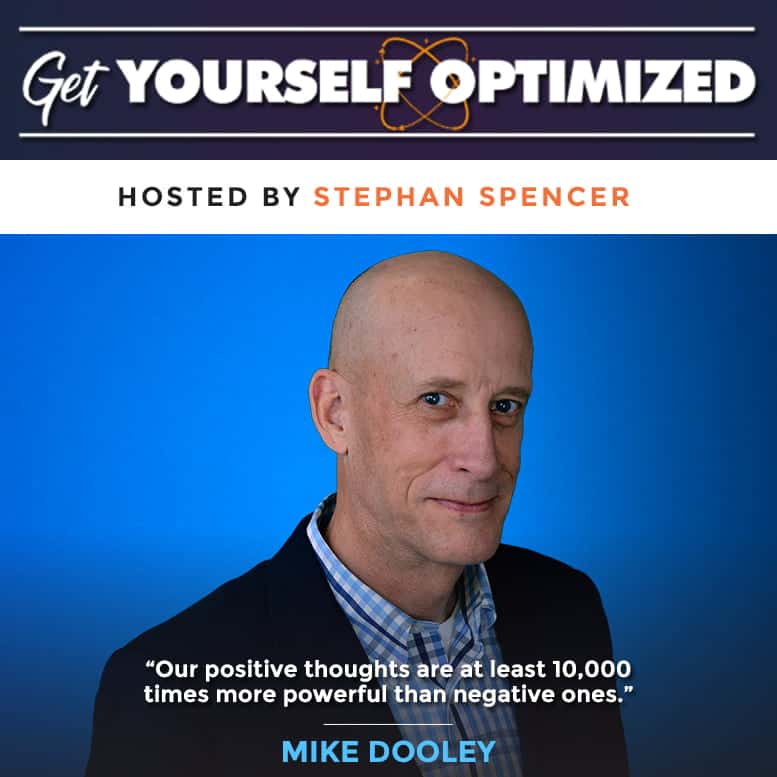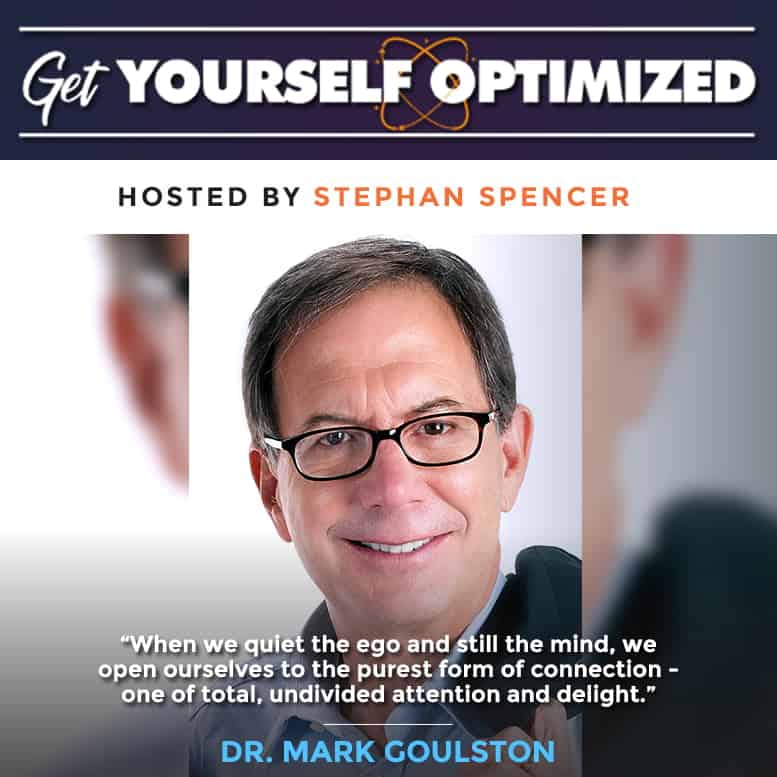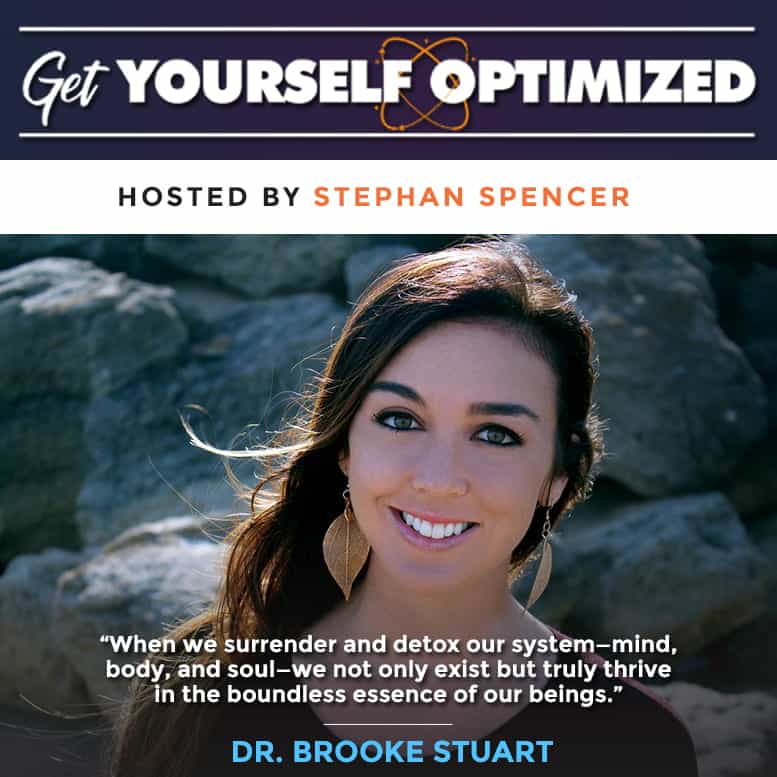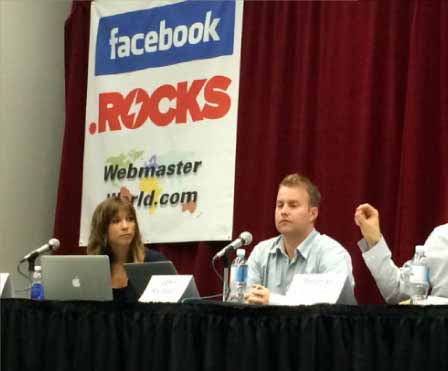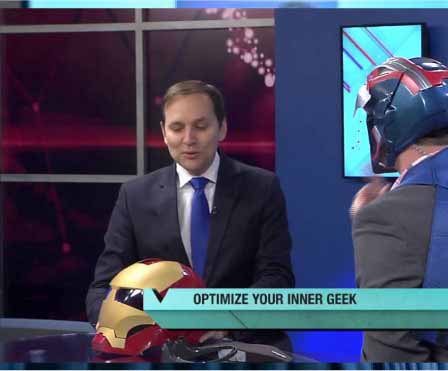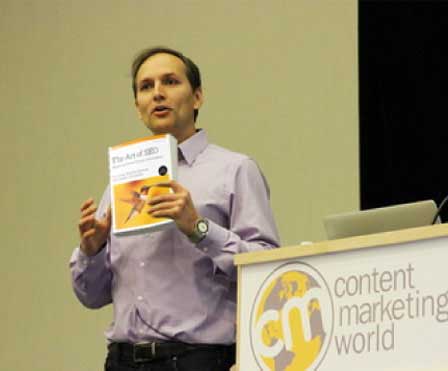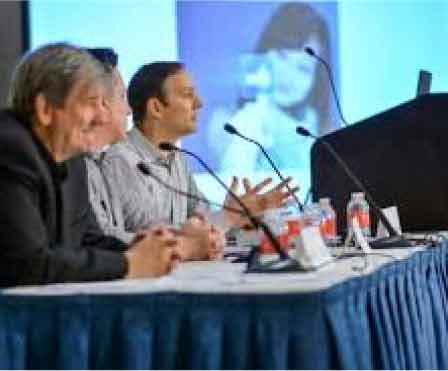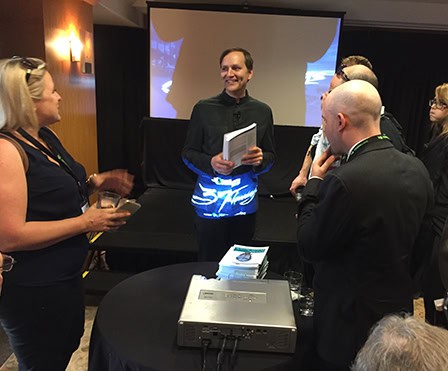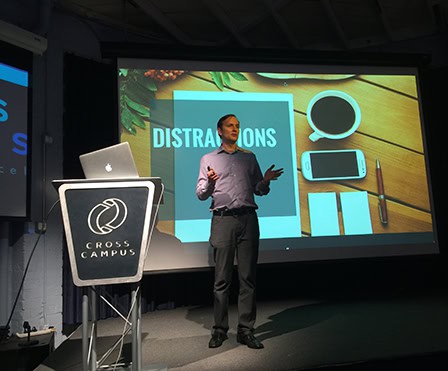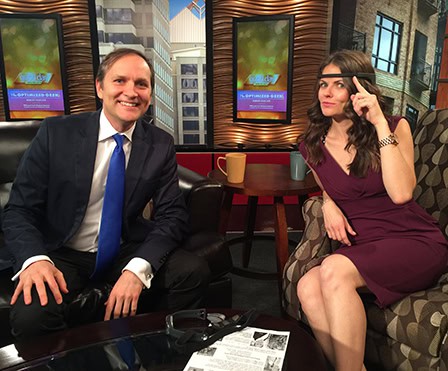Transcript
My guest is Dr. Aubrey de Grey. He’s a biomedical gerontologist based in Mountain View, California. He’s the Chief Science Officer of SENS Research Foundation, a California based 501(c)(3) biomedical research charity that performs and funds laboratory research dedicated to combating the aging process. He truly is an expert on aging and anti-aging or reversing the disease of aging. Aubrey, it’s so great to have you on the show.
Thank you for having me.
First of all, what is senescence because that’s part of your brand, the SENS Research Foundation? The second S is for Senescence, right?
Yes. The name of the foundation is SENS Research Foundation. It stands for Strategies for Engineered Negligible Senescence but that’s a mouthful. The reason that I gave it that name and the concept of the name SENS years ago was that it’s the word that people in the field of the biology of aging have been using for a long time to try to be more precise about what they mean by aging. I think that’s a little bit of a waste of time. The word aging is properly understood anyway by everybody to mean the undesirable aspect of people’s lives that occur as a result of the physiological decline and letting life. That’s all that senescence means, the bad parts of aging as to distinguish it from the things like becoming more knowledgeable.
There’s something in our bodies that happens as part of our normal upkeep at the cellular level. It’s programmed cell death. One thing that oftentimes gets us in old age is cancer. How do these two things interplay, the programmed cell death and cancer?
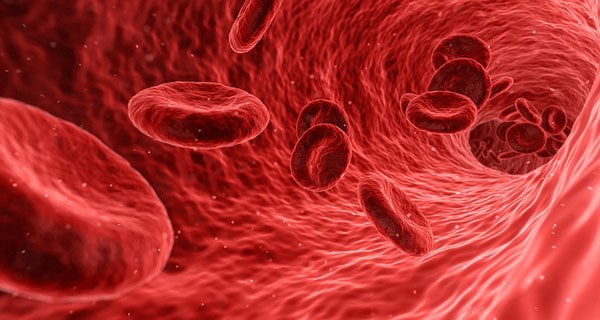
In a complicated way. The programmed cell is programmed and that means that it’s a good thing. It is a way in which the body gets rid of cells that it doesn’t want. This happens during our early life even before we’re born. The growth, the shape and the structure of many of our tissues are created by cells going away in certain cases in order to make the right shape. It’s also an important process throughout life in the elimination of cells that have become damaged in an irretrievable way. Although it’s better to get rid of them and replace them with a division of another cell rather than trying to repair the cell. A significant part of aging consists of the body’s failure to do that because sometimes cells get into a state where not only are they doing more harm than good but also it is, in one or another, resistant to the process of programmed cell death. Not just programmed cell death but also the cell being killed by other cells of the immune system, which is another way that the body has for achieving this goal.
Cancer comes there because cancer, more or less by definition, is the excessive division of cells. Cells dividing when they’re not supposed to. Certainly, one way to make sure that that doesn’t happen or at least that it doesn’t happen to an extent that kills us, is to kill those cells because that is one type of being aberrant. The immune system is extremely good at that. Indeed, cells that have become precancerous very often die on their own even without the help of the immune system, so as to get themselves out of the way. When we get cancer that’s big enough to kill us, an awful lot of things have to have gone wrong simultaneously and that’s a good thing because that’s the only reason why cancer doesn’t happen earlier in life.
What are some of these things that protect us from cancer cells that are probably at this very moment in our bodies? Statistically speaking, wouldn’t you imagine that we all have cancer cells in our body that are being destroyed by our immune system?
For sure we do, there’s no question about that. In fact, even in childhood, we would have some because mutations that are the underlying causes of cancer are a reasonably common event. In fact, each cell in our body undergoes massive, millions and millions of aspects of damage to it its DNA every day. Almost all of those lesions are repaired properly by a very sophisticated array of systems in the cell. Some of them are not and those mutations gradually accumulate. Most mutations don’t matter very much, either they kill the cell or they stop yourself from doing something that it should be doing or they don’t do any harm at all. Occasionally, they make the cell more inclined to divide than it ought to be.
We’ve got all these other things, some of which I just mentioned that the cell has to do, which are caught by other mutations that allow it to become a bona fide cancer. It has to figure out how to avoid the immune system. It has to figure out how not to listen to its own signal saying, “Something’s wrong, please die.” It needs to avoid other processes that get into a state called replicative senescence where it has a very severe break on the ability to divide. It’s got to do things to break down the proteins or the extra cellular matrix that are around the cell that would otherwise just physically constrain it from dividing and growing. The list goes on and on.
In fact, many years ago, some important cancer researchers wrote a paper on this called the Hallmarks of Cancer, which essentially tried to spell this out and summarize the state of knowledge with regard to how clever cancers need to be and how we might go about making us more resistant to cancer or getting rid of cancers. The term hallmarks have been reused to describe the system situation with aging. Years ago, a group of gerontologists in Europe put out a paper which, to be honest, was pretty much a restatement of something that I’d written at the beginning of SENS about eleven years previously, but they called it the Hallmarks of Aging by reference to this cancer thing. I’m very happy about it because it got a lot of attention. People understood it better than they had understood it when I said it a decade earlier and it’s cited all the time. It’s considered completely mainstream now.
These hallmarks of aging, how many of them are there and were there any new ones that they came up with besides the ones that you wrote about eleven years earlier?
No. In fact, the opposite happened. They left some of mine out but the number that they got to was larger than my number. They talked about nine where I only talked about seven. The discrepancy there is simply because they split it up in a different way. The way that they split it up didn’t have any reference to the type of interventions. The interventions that they were looking at overlapped in a different way. Whereas the ones that I talked about were divided very much on the basis of lining up one to one with types of intervention.
What are these hallmarks, the seven that you’ve come up with and then what are the interventions for these?
The first one is loss of cells. Cells dying and not being replaced by cell division. If that happens in a given tissue or in a given the organ, then the number of cells progressively goes down. Eventually, there are not enough cells to do the job that the tissue needs to do and we have a problem. A great example of that in aging is Parkinson’s Disease, which is caused by the loss of a particular type of neuron in a particular part of the brain. The fact is in different cell therapy. We put cells into the body that have been programmed in the lab into the right state so that they know what to do to divide and transform themselves into replacements for the cells that the body is not replacing on its own.
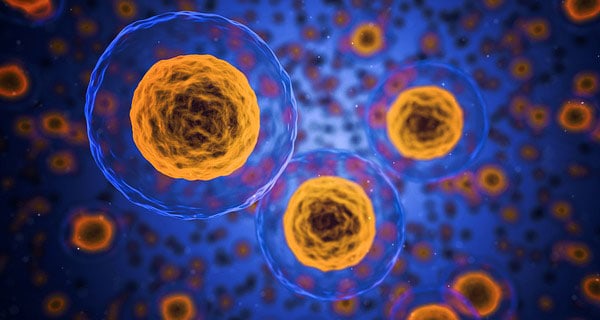
That’s the easiest one of the seven. It’s also the one that’s furthest along, not surprisingly and it’s certainly the one that people know about the most. The next one is cells dividing when they’re not supposed to and we just dealt with that. That’s cancer and there are many different approaches to cancer. The one that I’m most excited about is cancer immunotherapy. Everyone’s excited about that over the past few years because of the great progress that’s been made largely arriving from two huge breakthroughs that were made nearly a decade ago, to make the immune system better at getting rid of cancer cells. You have seen nothing yet. There’s plenty more in the works.
Tease some more of what’s coming. What do you envision and when?
What’s coming is enhancements of what we can do already that are resulting from improving technology at the level of sequencing, at the level of manipulation of DNA and protein for that matter. For example, one thing that cancers do is they produce proteins that are not produced by normal cells. This happens simply because of random chance. There are a bunch of mutations needed in a cancer cell to be cancerous, but you had to get those as a result of having lots and lots of mutations that are just bystanders. That don’t have anything to do with the cell being cancerous. They still have a signature in the sense that they cause these unusual proteins to be made. Those unusual proteins presented on the surface of the cell in the same way that every other cell does, as a signal to the immune system to see the identity of the cell.
If those different proteins are seen by the immune system and they’ve seen it foreign, the immune system has a chance of killing the cell. It’s a bit of an arms race because this cancer will also develop ways to resist the immune system as I mentioned. The more the immune system is tuned to eliminate cells with what I call neoantigens on them, the more the balance of that arms race is tipped in favor of the immune system against cancer. One very cool thing that people are trying to do is to sequence the entire genome of cancers and figure out what neoantigens they’re going to make as a result of the sequence and then make large numbers of antibodies, different antibodies to different neoantigens so that the immune system can attack all of them simultaneously, more aggressively than it normally would. This seems to be working very well. That’s just one example.
Gene editing inside of our bodies that’s made possible by a technology that I heard about called CRISPR. Is that something that would play a part in what you’re describing with the cancer immunotherapy?
What doesn't get measured doesn't get managed. Click To TweetYes and no. The thing about most of the ways in which we would do cancer immunotherapy is that it involves taking cells out of the body and manipulating them genetically in the lab and then putting them back. CRISPR is certainly very useful for doing that but it’s not the only technology that’s useful. In general, what you can do to the DNA of cells in a culture dish is much more versatile, with much more options than what you have in the body itself because you have much more control of the safety.
That’s the second of the seven, the cancer and then cancer immunotherapy as a mechanism to deal with it. What’s next?
Another way, which you can have too many bad cells. That is if cells are not dying when they are supposed to. I mentioned that that’s one of the things that cancers need to do is to resist their own cell death machinery. Cells that are not necessarily dividing too much also have this problem potentially. Indeed, some of them do. We’d see these cells, they’re normally called senescent cells but I like to refer to it on what broader category because the term senescent has a technical meaning that is a little too narrow. Senescent cells or death-resistant cells get into this state. They’re doing more harm than good but they’re not dying and we want to try to make that happen. There are a lot of similarities with the cancer situation.
In fact, some people have described senescent cells as cancer cells that are not dividing, which it’s a little bit weird but the intention is to indicate that similar things can be done with the immune system to help us to get rid of these senescent cells. However, because the cells are not dividing simpler methods, like simple drugs have a much better chance of success than they do for cancers. Cancers have the problem of course that they have natural selection on their side with constant mutations happening to allow the cancer to resist whatever therapy we throw at it. Senescent cells don’t have that. Senescent cells are relatively easy to get rid of and that’s why we are in the very wonderful position of having a half a dozen companies following a desperate array of approaches to doing this, whether it’s with small molecule, with genes or with immune enhancement or whatever.
Some of these companies are getting into clinical trials already. They’re getting very well-funded by visionary Angel investors and even by more established investors. Life is good around the senescent cell world. The other four are not to do with cell number, they are to do with molecular changes. Two of those things are inside cells and the other two are outside and the spaces between cells. First of all, the ones that are inside cells, we’ve got mutations in the mitochondrial DNA. We’ve talked a bit about mutations in our regular chromosomes which lead to cancer. I have argued for a long time that mutations in regular chromosomes that don’t lead to cancer don’t matter. The evolution has been forced to create a system of DNA repair and maintenance that’s so good in order to stop us from getting cancer before we’ve had offspring, that it’s unnecessarily good for everything else.
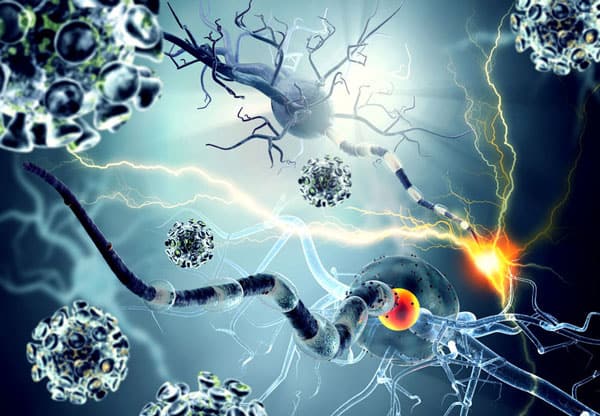
It’s a controversial hypothesis, whether the mutations in the nuclear genome that do not lead to cancer matter enough. In other words, whether they accumulate during the normal lifetime to a level that’s bad for us. I still believe what I wrote up more than fifteen years ago, that no. We can ignore those because cancer is the only problem. That doesn’t tell us about the mitochondrial genome. The mitochondria is this very important part of the cell that does the chemistry of breathing. In other words, they combine oxygen with nutrients in a way that extracts energy from those nutrients that the cells use for everything else. Mitochondria is the only part of the cell that has its own DNA. It turns out that that’s a really bad place for DNA to be because it’s right next to this chemistry of breathing. That chemistry of breathing creates these toxic molecules called free radicals, which damage the DNA among other things.
Sure enough, the mitochondrial DNA accumulates mutations far faster than the nuclear genome. In fact, there are other reasons why that happens, not only the ones I’ve just mentioned. Those mutations most people agree they do matter in a normal lifetime. We don’t do something about that and unfortunately, fixing those mutations is really tricky and hard. We have another option, which was first suggested more than 30 years ago by a group in Australia, which was pretty much universally abandoned as being too difficult. Over the past ten or fifteen years, our group at SENS have shown that was premature. We’re pretty close to making it work. The approach is to put backup copies of the mitochondrial DNA into the nuclear genome, into the regular chromosomes where they are not subjected to such a high threat of mutation.
If you put DNA in the wrong place, it’s not going to work. Something has to be done to compensate to tweak the DNA to make the proteins that it encodes, go back into the mitochondrion and do their job even though the DNA is in the wrong place. Luckily, that’s not as hard as it sounds because the mitochondrion has a lot of proteins, more than a thousand and the mitochondrial DNA only encodes thirteen of them. The thirteen in question are very important ones but that’s all there are. We’ve already got machinery naturally in the cell that does this importing into the mitochondrion, more than 1,000 proteins that are naturally go in the nucleus. Therefore, the only requirement is to go up that same machinery for these additional thirteen proteins. That’s what we’ve been able to do.
The next one, number five is also inside the cell. This is a much simpler one to describe. It’s garbage, waste products that accumulate inside the cell. The cell makes waste products of all manner and kind all the time as byproducts of the processes it needs to perform to keep us alive. Almost all of those products are destroyed. Either they’re destroyed in the cell or they’re eliminated by excretion. They’re chucked out of the cells and then out of the body and that’s fine. There is a small minority of byproducts which are not. This is simply because they are very rare byproducts and therefore, they accumulate very slowly, so slowly that they don’t cause any problems for the cell until late life. Late life is the time when evolution no longer cares about us because we have already reproduced.
Those things are not destroyed and they’re also not excreted. They accumulate inside the cell, usually in a garbage disposal machinery called the lysosomes and eventually they’ll get to be problematic. This is why we get things like atherosclerosis from the accumulation of oxidized cholesterol or indeed macular degeneration, which is caused by the accumulation of a derivative of Vitamin A. We’ve got to fix this and of course the right fix is simply to clean out that garbage. It turns out that a very effective way to do that is to identify bacteria in the cell typically that already have genes, enzymes that are able to break down this garbage. Now, rather in the same way that putting a gene that’s normally in the mitochondrion into the nucleus, if you take a gene that’s normally in bacteria and you put it into human cell, it doesn’t work. There are tweaks we can do that might make it work and these tweaks are not necessarily obvious. Long story short is that in both the cases I mentioned, atherosclerosis and macular degeneration, our group was successful in achieving this and thereby augmenting the garbage disposal machinery of the relevant cells. Both of those projects and research teams have moved forward far enough to be spun out into companies that are indeed going into clinical trials.
The next one is outside the cell, the actual nature of the problem is garbage, waste products. You may think it’s a little strange that I would want to list them separately from inside the cell. The reason why is because the process to getting rid of them is very different. In this case, it turns out that all we need to do is get the stuff inside the cell, in other words, get cells to engulf this stuff. That’s because the machinery that we naturally have outside the cell for destroying garbage is primitive as compared to what we have inside the cell. That means the stuff accumulates outside the cell, even if it’s relatively easy to destroy, if it were only inside the cell it will already be toast, but that’s what we make happen. This was pioneered in the case of Alzheimer’s disease and that was one of the inspirations for the whole SENS idea that I first put forward in the year 2000. It was shown years ago that one could eliminate the amyloid plaques in Alzheimer’s disease in a mouse model. It took a long time to get from there all the way to making the thing work in humans, but it definitely works. We’re now up to four different vaccines that big pharmaceutical companies have created that definitively all the way through clinical trials, they really do remove this amyloid.
They don’t have all that much of an effect on cognitive function in Alzheimer’s patients but that’s no surprise because there are plenty of other things that also go wrong in Alzheimer’s. This is the first step towards a cure for Alzheimer’s. However, we’ve taken the same thing forward in relation to other types of extra cellular garbage and we’ve been quite successful. There’s one type that happens in the heart, which is apparently very prominent in terms of the cause of death of extremely old people. People over the age of 100 and it may be important to early ages as well that hasn’t been studied enough yet. Although we’ve developed an immunotherapy to get rid of that to again to cause cells to engulf it. In this case just to chop up the stuff without getting it inside the cell and that seems to be very effective. That also had been spun out into a separate company that’s receiving funding from elsewhere.
I’m down to my last one, which is again outside the cell but in this case, it’s not to do with garbage. It’s to do with chemical modifications of stuff that we do not want to destroy. The stuff that we don’t want to destroy called the extracellular matrix. It’s a lattice of proteins that gives tissues their physical properties like elasticity. Those physical properties are very important because for example, in the major arteries, we need elasticity so as to buffer the heartbeats so that the fragile, more distal parts of the circulatory system, the capillaries do not get damaged. Sure enough, what happens over time is that elasticity diminishes. The major arteries become stiffer and the result is the heart has to beat harder in order to get blood around. We have an increase in blood pressure, which causes all the problems we’re familiar with. We need to fix this. We need to restore that elasticity. It turns out that the molecular basis for the loss of elasticity has been well-understood for a long time.
Basically, it’s the result of spontaneous chemical reactions between the extracellular matrix and sugar in the bloodstream. Those reactions are understood and the chemical structures that result from them are also identified or at least we believe that the main ones have been identified. They’re very different from the structures at the body creates on purpose. That means that in principle it should be possible to generate drugs or enzymes that are nicely selected that will break these unwanted, accumulating chemical cross links without having side effects. We’ve had great success in that area where we funded at Yale University and that too has been spun out into a company that’s getting a very good funding.
Your research efforts are making a difference in moving some of these interventions forward and then companies getting founded. Are you a stakeholder or a shareholder in these different companies that are being formed? How does that work?
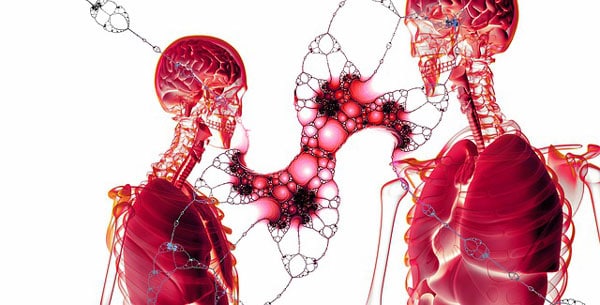
We’re very proud of our successes here. We call it our business model, is to pursue the most challenging aspect of damage repair for aging for as long as it takes, to get to a sufficient level of proof of concept that investors can see a value proposition. We do take a stake in these companies when we spin them out but only a small one because we feel that it’s important not to dilute other investors. Also, there are early stage companies where they won’t have products and so on for quite a long time. We don’t really see it as a meaningful near-term source of revenue for the foundation. In terms of the influence that we have, it is much larger than that.
In addition to our spin outs, there are dozens of other companies doing very aligned work in one way or another doing damage repair. We want those companies to succeed as well. I am advising such people all the time and investors likewise to understand that the foundation is accessible to this where they go to people for information, they’re all coming to me as well. I’m spending a lot of my time just making introductions, making things happen, making sure that money goes to the places where it’s going to be most effective.
Back to these seven different aspects of aging and the interventions with cancer. With number two, you mentioned cancer immunotherapy as a very promising intervention. You didn’t mention chemotherapy, radiation or surgery as interventions that are promising. What are your thoughts on these different old school models of dealing with cancer?
We must not neglect that. The fact is cancer immunotherapy does not work effectively on all cancers by any means and indeed it’s probably going to be a little while before it does. Other more radical approaches to eliminating cancer like for example, inhibiting the ability of cancer cells to extend the ends of their chromosomes, which is an approach that we’ve pursued quite aggressively over the years. That again is somewhere else. We have to work with what we have. My friends are the MDs rather than the PhDs, they were working with what we have. However, everybody knows that the goal is to develop therapies that are less invasive and much freer of side effects. Everyone knows that any intervention that is purely focused on selectively eliminating cells that are dividing rapidly, is going to have a big side effect because we’ve got plenty of other types of cells that divide rapidly. Indeed, some cancer cells don’t divide as rapidly as all of those. Those are probably the cells that are most important to eliminate.
One of the things that you mentioned going through the seven different aspects was garbage inside the cell and outside the cell. Then the garbage collection that needs to happen as part of our normal living, respiration and all that. Where does the heavy metal toxicity fit in? We get exposure to mercury from eating fish and lead. There are also PCBs that are still in the environments. There are glyphosates. There are even 5G and EMF exposure that is causing havoc to ourselves. Where do these different things fit into that garbage collection model inside and out of the cell?
First, let’s talk about the radiation aspect that you mentioned. Radiation itself does not accumulate but radiation might have effects on the rate of accumulation of other types of damage. I think that the evidence for that is extremely limited. I don’t think it’s really been made. The key point is even if it is the case that radiation from external sources is accelerating the accumulation of different types of damage. Then so what? If those types of damage are already occurring at a slower rate, we’re repairing them by the corresponding methods I’ve just mentioned. Then all that said is that we would need to repair them a little bit more quickly and a little bit more thoroughly and that’s not a problem. With regard to actual substances coming in from outside like heavy metals or whatever, you’re quite right. That’s an important thing to consider.
The evidence that it can’t affect significantly to most peoples’ health at late ages is pretty much absent. I don’t think we could really make that case. One can have extreme situations of exposure, but I’m talking about most people. Nevertheless, that doesn’t necessarily mean we should ignore it. I think that it’s really important to recognize that there is a way out of this, which is oscillation in how much fat we have. Fat cell, adipose tissue tends to accumulate heavy metals and such like preferentially which means that if we want to get rid of it, then one thing we can do is if we starve out for a bit. That means that our fat cells will essentially metabolize their contents.
What happens is sure enough they release their contents, including these things like heavy metals into the circulation. We don’t want to do that too rapidly because then the metals would just go elsewhere. A small amount of release will simply cause excretion of the relevant substance through the kidneys. For the overall amount of heavy metal that remains in the body will have been reduced. Then we can start eating again and get back to where we were, except that we’ve lost those heavy metals. That’s the nice low-tech approach to that particular problem.
That’s intermittent fasting that you’re referring to?
Intermittent fasting has connotations. That is a method that people have been promoting for much more general good health, especially during late life. It’s essentially just a refinement of the general concept of calorie restriction of eating less than one would really like. It has some benefits, but it certainly does not at this point seem to be likely to significantly extend life. It might extend health though.
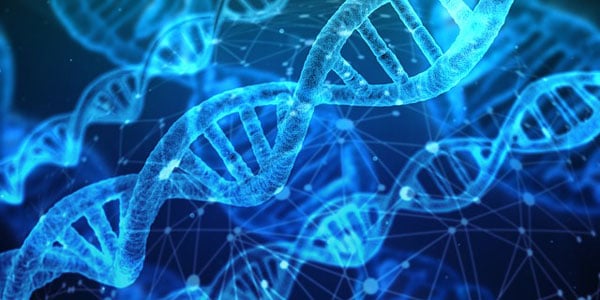
What are you doing to extend your life, to increase your health? Like supplements and therapies and various technologies, what are you up to?
I don’t do anything. I do as I say rather than doing as I do. There are two reasons why I don’t do anything. First one is I’m just really lucky. I have had the good fortune to be tested I think five or six times now over the years. A really high-end thorough test of my physiological age, measuring hundreds of different things in my blood and so on. I will come at way younger than my actual age. I’m in a position where if it isn’t broke, don’t fix it. I haven’t been pretty conservative. I just seem to be the kind of person who can eat and drink exactly what they like and nothing really happens. I don’t even need to do much exercise. Also the second thing which is I want to save lives and I work very hard to do so. The result is I don’t get nearly enough sleep and that’s definitely bad for me. It’s only slightly shortening my life and I may be lengthening my life by my own work. Maybe it’s not a win but don’t do as I do.
What are those tests that you do that check all these hundred or whatever different attributes? Is that like the Health Nucleus Tests from Human Longevity Inc. or something different?
It’s older than that. The tests that I’ve had done do not involve genetic tests or epigenetic clinical thing or anything like that. In due course, I definitely will move up to that kind of thing. The ones that I’ve had done just measure things like metabolites, the obvious things like insulin, triglycerides and oxidized lipids and so on and everything else. All the kinds of things that typically change with life, various hormones. I always come out on the young side. Also, cognitive tests, electrical tests, how long I can go on a treadmill and stuff like that.
You mentioned epigenetics. For our audience who are not familiar with that concept, could you describe the difference between genetics and epigenetics and why it’s important?
Everybody knows that genes consisted of this molecule called DNA, which is a sequence of four different components, very long sequence, three billion of these things in two copies in each cell. That defines what protein cells can make, but it does not define on its own what proteins our cells doesn’t make. Different cells have different roles in the body. In order to perform the different roles, they have to make different proteins in different quantities. That has to be somehow implemented in the cell. The cell has to know what it’s creating and what it’s not creating. That is done by what’s called the epigenetic state of the cell, which is at the molecular level achieved by certain chemical modifications of these components of the DNA, things like methylation and also by chemical modifications of proteins that are in the proximity of the DNA.
For example, there’s a type of protein called a histone, which the DNA is normally wrapped around. There are certain modifications to histones that determine whether a particular gene in that facility of the DNA is going to be turned into a protein or not. That’s really the epigenetic state of the cell. The epigenetic state does not only differ from one cell to another depending on what the cell’s role is. It also changes throughout life. Over the past few years, there’s been a great deal of focus on this because people have been able to come up with really good indicators of the biological age of somebody by looking at what’s called the epigenomes, specifically at this methylation thing. What they have shown is first of all that the thing measures your chronological age, which is not useful in itself because we already have birth certificates. Then they can look at deviations from that prediction and they can ask whether somebody is looking epigenetically older or younger than their chronological age. That’s where the research focus is these days. There’s a huge amount of great stuff happening in that area.
Is there a particular test or analysis that you would recommend to check your epigenetic age, your biological age versus your chronological age?
Certainly not. Firstly, I’m not dumb enough to endorse things and by default unendorsed other things. Also, because things are just moving too fast. The quality of these tests is improving very rapidly right now. There’s more to it than what I’ve said so far. It’s not just the epigenetic test. There are also tests of the same kind looking up what’s called the proteome, which is a set of proteins that will exist for example in the saliva or blood. There’s other work being done to combine these things, to look at for example also metabolites at the same time. Even metabolites whose function we don’t know, but which nevertheless seem to change with age, therefore they could be useful indicators. There’s a great deal going on.
There’s also something that happens as we age where the caps on our chromosomes, the telomerase get shorter and shorter. There are some implications there as far as aging, correct?
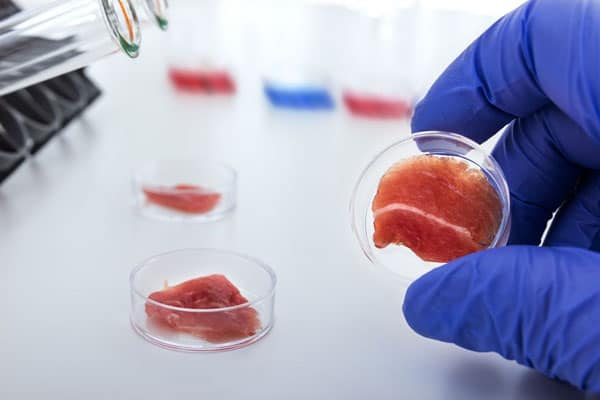
Maybe, maybe not. Way back, it was indeed discovered that when a cell divides, the ends of the chromosomes get shorter. The first thing that was discovered years ago was that cells simply get into this state called replicative senescence where they don’t divide anymore. It was about ten years later that people figured out what was really going on about why these cells stopped dividing. The reason for this is very fundamental. The process of DNA replication has only evolved once in the whole history of life and the way it evolved turned out not to be able to replicate the ends of a linear molecule of DNA. When DNA replication first evolved, we didn’t have that problem because bacteria, which came first, don’t have linear chromosomes. Their DNA is a circle. We do have that problem.
In order to get around it, evolution has created this special enzyme called telomerase, which adds DNA back on the end of the chromosome. You don’t have to add a little bit because only a little bit of DNA is lost when a cell divides, but it still adds up unless you have this compensation. What does all this mean? The first thing it means is that if you have a lot of cell division in the body, then the cells are just going to eventually die or at least stop being able to do their job. If you look at what the body made of, there are not many cells that are doing that. Most of our cells don’t divide at all or they only divide very occasionally on demand. Like for example, cells in the lower layer of the skin called fibroblasts. They divide pretty much only when there’s a wound. They divide like crazy. They’re really good at it to close the wound. That’s why they are the cell of choice for doing these experiments in which the concept or the phenomenon of replicative senescence was first discovered, but they don’t divide much normally.
When you’re doing an experiment with fibroblasts showing this phenomenon, you’re not looking at something that’s representative of what goes on in the body. Essentially, you’re tricking them into thinking that they’re an infinite size wound that they can never quite close. They’re dividing far more than they would ever need to even in a whole lifetime normally. There are some cells however that do divide frequently that they would get into this problem. For example, the stem cells or the upper layer of the skin, the epidermis. Also, the stem cells of the blood. The thing is those cells use this compensation mechanism. They create a little bit of this enzyme called telomerase so they don’t have the problem.
What this all adds up to is that it’s not at all clear that replicative senescence plays a significant role in aging of the human body. There are some areas where it may, especially some aspects of the immune system. It looks as though there may be something going on, but it’s not clear. The flip side is that cancers do a lot of this enzyme telomerase and that’s what allows them to grow. If they didn’t have it, then they would divide themselves into oblivion way before they got to be big enough to be even noticeable, let alone to kill us. A perfectly reasonable approach to attacking cancer is to try to stop cells from expressing telomerase, this enzyme. We’ve had a go at that. It’s pretty hard but it might be an important way to go, especially if cancer immunotherapy encounters obstacles that stop it from being real. That’s where we are with the telomerase question at the moment. It’s still very complicated.
One thing I’ve heard from some folks like biohackers in particular, like Dr. Jack Kruse said that a lot of our aging and our chronic disease is happening because of the mitochondria and chronic mitochondrial diseases. There’s a term for people who are focused on improving their mitochondrial health. They’re called mitochondriacs. Could you say a bit more about that?
Enormous numbers of easy things don't scale and don’t actually contribute to progress towards the most difficult or important thing. Click To TweetThe term mitochondriac is a tongue-in-cheek term that people who do research on mitochondria tend to use for themselves. I only spoke about one aspect of mitochondrial aging, which is the accumulation of mutations. Even in old age, only a very small proportion of our mitochondria have mutant DNA. That small proportion is not evenly distributed, however. You have some cells that are completely taken over by mitochondrial mutations. That’s probably very important to why mitochondrial mutations master and how they contribute to our health. However, there is a much more general phenomenon where mitochondria simply don’t work so hard. They don’t make so much energy, exert so much energy late in life. That’s a very curious phenomenon that is still debated in terms of why it happens and how it happens, but it’s definitely important.
However, what we can say is that it is not autonomous. In other words, it is not a result of some intrinsic thing that’s going wrong in the mitochondria themselves. The mitochondria are constantly being recycled. Even in cells that are not dividing, the mitochondria are dividing every so often and some of them were destroyed, the other ones divide. There’s constant turnover. There’s no way that anything other than the DNA could be accumulating damage. Therefore, what’s going on is some kind of response to something else that’s going in the cell. The mitochondria are not working so well because they are in some way being told not to. That’s what the next challenge obviously is to figure out what the environment of the mitochondria needs that matters. There’s been a lot of focus lately on a molecule called NAD, which is extremely important metabolites that essentially act as a reservoir of electrons that is used by mitochondria to do their thing.
The amount of NAD in the cell and also in the bloodstream for that matter, declines with age and so does the amount of unladen NAD. In other words, the reservoir of electrons is smaller and it is fuller. A higher percentage of the reservoir is occupied. That seems to be a bad thing. It seems to make the mitochondria work less well. The idea is maybe if we can give supplements that are able to raise the amount of NAD, you don’t give NAD itself because it gets destroyed, but you can give precursors of it that are used as building blocks for NAD. Then you can increase the size of the reservoir and you can also decrease the fullness of the reservoir by default, so to speak. That seems to be beneficial. Exactly what this will do for aging overall remains to be seen, but it’s a very active research area both in academia and in the private sector now.
Is there anything that you would recommend our audience do to improve their mitochondrial health while this research is going on?
To be honest, no. At this point, it’s too early to say what’s going to work well, what’s going to not work well. Furthermore, one thing that I always have to point out is anything that I might recommend or indeed anything that you might read in a book, you should always take with a pinch of salt because it is the lowest common denominator. It’s a general statement about what everybody should do. That makes no biological sense because people differ too much. People vary too much in terms of their metabolic requirements, their metabolic performance. The early general advice that one can give is to pay attention to your body. Do what works for you. One doesn’t sell books by saying that.
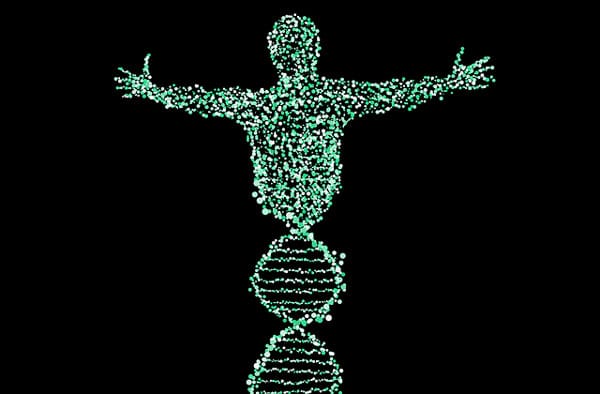
That means paying attention to what seems to be working and not working when you try different supplements and so forth, but also getting tests that give you real data back on how you’re doing too. I would imagine that getting regular scans and blood tests and that sort of stuff is going to help you stay on the right path there. Peter Drucker said, “What gets measured, gets managed.”
All of the above, yes. At least we can tell you that what doesn’t get measured doesn’t all get managed. Not just supplements but also lifestyle and diet in general and other types of monitoring. A Fitbit and all of these things are a good thing.
I have an Oura Ring that I always wear. It tells me how much sleep I got, the activity levels that will remind me if I need to get up and move some more. It’s very helpful for me. It’s nonintrusive. I also take a bunch of supplements. I take RESTORE, which helps with the communication in my microbiome. I take CytoDetox that helps with binding the heavy metals and the different toxins. I take a nitric oxide type of a lozenge called Neo40 to help with nitric oxide production. All the regular vitamins and things, like Vitamin D and fish oil and that sort of stuff. I’m curious, any thoughts on any of those different things I mentioned? Have you had any exposure to any of these different supplements or heard anything that you might want to pass on?
I really don’t have anything to add to what I just said. One thing I also have to emphasize here is that’s not really my area of expertise anyway. I’m focused on developing regenerative medicine that is currently in its early stages. Other people are a lot more knowledgeable and well-placed than me to advise on diet and supplements and so on.
Let’s talk a little bit about pets because they’re family members for many of us. They get these chronic diseases and age and their body’s breakdown. I’m dealing with my cat having a cancer of the liver and gallbladder bile ducts. It’s beyond the point where it’s even to be assisted by surgery. That’s pretty depressing, pretty sad to deal with that. I assume that all of these seven aspects of aging and the interventions are all applicable to pets, to other animals as well. I’m guessing that’s where we test in fact is with animal models, like mouse models and things like that. Any additional thoughts on pets and extending their lives?
You’re quite right, this really matters to people. It has been pointed out for many years that if we had a better focus on companion animals, especially cats and dog of course, then we might be able to get better funding for a search because people really care. Also because of course, even though the goal is to help these animals, occasionally things are going to go wrong and people get upset when you kill a dog or a cat, but not nearly so upset as they do when you kill a person. The safety regulatory process is more rapid. Cats and dogs are intermediate in size and also in longevity between mice and humans. That also might indicate that there would be more faithful models. You’d learn more about humans from them than you would from mice. That’s not really true, unfortunately. The details of what goes wrong in animals is not really translating that way. Though you are right in what you said, that it’s the same seven things, just the details are different.
Nevertheless, all that said, there is definitely enthusiasm for doing such work. For example, there’s a very important study that’s been going on for a few years now in the University of Washington up in Seattle, looking at the effect of rapamycin on dogs. Rapamycin is a rather old drug that has historically been used as an immunomodulator, but over the past several years, there has been a huge interest in its ability to postpone aging. It was first discovered in mice. It’s now believed that it works as a very effective calorie restriction mimetic. In other words, a drug that makes the body think that it’s not getting enough food, that it seems some kind of famine even when you’re eating normally. That’s a very interesting study and it’s not the only one. There are lots of stuff going on and being planned in this space. I’m all in favor of it. The more we learn, the better.
You mentioned rapamycin. What about metformin? I’ve heard good things about that. That’s a drug that a lot of people who are suffering from diabetes are taking.
Metformin is historically a diabetes drug. It’s another very old drug. People have got pretty interested in the possibility that it too could be an effective calorie restriction mimetic or maybe that it could affect aging in other ways. There was a particularly exciting analysis done, which showed that diabetics who receive metformin live longer than nondiabetics who don’t receive metformin, which is quite an interesting discovery. It needs to be replicated in other populations of course. It needs to be generalized. There’s certainly plenty of momentum behind the idea that we should explore metformin’s general anti-aging properties more thoroughly than what has happened so far. There are plans to conduct a clinical trial of this even though of course metformin being an old drug that’s not patentable anymore, no one’s going to make any money out of it. The result of that is that it’s proven to be quite difficult to fund this clinical trial. I’m hopeful that will happen in due course.
Back to this idea of funding, you are doing so many different research projects and some of these turns into companies. How are you getting most of your funding? Is it from grants? Are you looking for donations from folks like me and my audience? How can we help? How does this machinery of technological advances in medicine that you’re pioneering, how does that get funded?

Philanthropy is the answer. We are definitely the engine room of this industry. We pursue projects until such time as they are far enough along to be of interest to people who think they might want to make money in the long run. That’s the point at which we spend them out. The projects that we pursue before that time to get them to that point are predominantly the ones that other people who do rely on government grants and so on are not doing. We have to ask, “Why would they not be doing them?” I’m only talking about ones that need to be done by somebody. It’s certainly not because the scientists are not interested. It is. It’s simply that the structure of government funding, indeed funding from large foundations is driven by a process called peer review, which is extraordinarily biased. I would say irretrievably biased in favor of easy stuff, in favor of low-hanging fruits.
The whole academic career structure is driven by getting publications in high profile journals quickly so that you can get your next grant application funded or your next promotion or whatever. That is a tragedy. It absolutely catastrophically slows science down because enormous numbers of easy things don’t scale. They do not contribute to progress towards the more difficult thing or the other most important. We at SENS Research Foundation, we certainly publish but we don’t decide what to work on, on the basis of maximizing how often we publish. We publish when we feel like it. This means that we do things that could never be done if they were being funded in more traditional way. I work on mitochondrial mutations for example. We are now recognized as the absolute far and away the world leaders in that area because we spent eleven years working on that project before we even got our first publication and we didn’t give up.
Now, we’re way ahead of everybody because they just couldn’t do it. They just weren’t in a position to work on things that were so difficult. The only way we do it is by being funded by philanthropy, by making our own decisions independently of vested interests and short-termism. Our budget is still tiny. We still work on an annual budget of only $5 million, which is if it were bigger than we get a lot more done, no question. We’re very proud of what we have achieved with this over the years. Our website, SENS.org, has a nice friendly Donate button. If you’re in a position to donate more than that, then there’s a contact form as well, you can totally get into action. We’ll tell you how to do so. The budget does currently consist of a small number of donations that are large from wealthy people and also a large number of small donations. Every dollar counts.
To my audience, help make a difference in the longevity of the human race and perhaps your loved ones too by donating to the SENS Foundation. The website for your foundation?
If somebody wanted to learn more from you, do you have any additional information, articles, courses, webinars or anything like that you could point them to?
The website has a wealth of information about what we work on and why and what other people are working on like news and so on. It’s written for every kind of audience, from complete novices all the way up to professionals. We think it’s very thorough. I encourage people to go to it. I spent my life on the road. There is a lot of me on YouTube, so that’s one way to find out more. We have a conference in Berlin on March 28th through 30th. It’s called Undoing Aging. There will be a lot of the most important research being done in this area being showcased. Anyone who can get to that is advised to do so.
Thank you so much. This was fabulous. I’m so honored to have you on the show and to share your brilliance. I got to meet you several years ago through Foresight Institute. I saw you several times since then, including through Neil Strauss’ Secret Society, which was really cool as well. You’re doing amazing things in the world. Thank you and keep it up.
You’re very kind. Thank you again for having me on the show.
To the audience, get out there and start doing some research and make a difference in the lives of yourselves and your loved ones. Make a donation to SENS because they’re doing some great things as you’ve heard. We’ll catch you on the next episode of Get Yourself Optimized.
Important Links
Checklist of Actionable Takeaways










 About Dr. Aubrey de Grey
About Dr. Aubrey de Grey
Dr. Aubrey de Grey is a biomedical gerontologist based in Mountain View, California, USA, and is the Chief Science Officer of SENS Research Foundation, a California-based 501(c)(3) biomedical research charity that performs and funds laboratory research dedicated to combating the aging process.
Disclaimer: The medical, fitness, psychological, mindset, lifestyle, and nutritional information provided on this website and through any materials, downloads, videos, webinars, podcasts, or emails is not intended to be a substitute for professional medical/fitness/nutritional advice, diagnoses, or treatment. Always seek the help of your physician, psychologist, psychiatrist, therapist, certified trainer, or dietitian with any questions regarding starting any new programs or treatments, or stopping any current programs or treatments. This website is for information purposes only, and the creators and editors, including Stephan Spencer, accept no liability for any injury or illness arising out of the use of the material contained herein, and make no warranty, express or implied, with respect to the contents of this website and affiliated materials.
LOVED THIS EPISODE
Please consider leaving me a review with Apple, Google or Spotify! It'll help folks discover this show and hopefully we can change more lives!
Rate and Review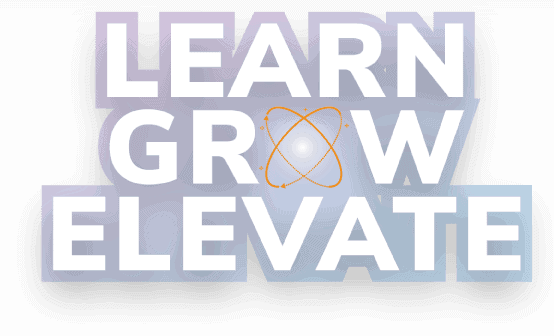







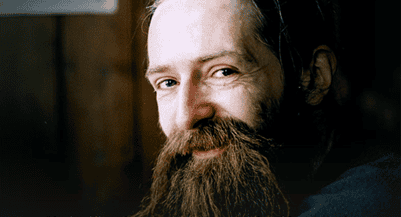
 About Dr. Aubrey de Grey
About Dr. Aubrey de Grey